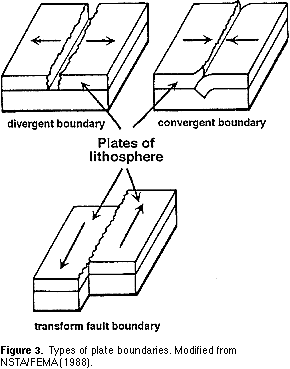Estimating seafloor spreading rates the south atlantic ocean formed by seafloor spreading at the mid atlantic ridge.
How to calculate sea floor spreading rate.
Spreading rate and asymmetry.
On the basis of our seafloor isochrons and rotation model we have calculated seafloor spreading half rates and relative proportions of crustal accretion i e spreading asymmetry on conjugate ridge flanks.
The rate at which new oceanic lithosphere is added to each tectonic plate on either side of a mid ocean ridge is the spreading half rate and is equal to half of the spreading rate.
As a general rule fast ridges have spreading opening rates of more than 90 mm year.
Total distance average spreading rate age of atlantic ocean 7.
Start studying exercise 2 5.
Rate of spreading distance the sea floor moved length of time or r d t generally expressed as cm yr.
Calculate the average spreading rate for the entire ocean from your three spreading rates.
The distance the sea floor moved divided by the length of time.
Learn vocabulary terms and more with flashcards games and other study tools.
1 m 100 cm.
Ft gal x 1 0 30 140 square feet gallon paint consumption.
So 1 km 100 000 cm or 10 5 cm.
Sea floor spreading allowed the creation of new bodies of water the red sea african plate and the arabian plate diverged pulling australia south america and antarctica away from each other in the east pacific rise the east pacific rise the most active sites of seafloor spreading more than 14 cm yr 16.
For the rate of sea floor spreading in the atlantic.
The current width of the atlantic ocean between points a and b is 4 550 km.
For the north atlantic ocean using the map in the lab.
To complete these calculations you will need maps showing the earth s crust.
These help highlight the movement.
This is an important concept for people in the earth sciences field.
Calculating sea floor spreading.
In order to calculate the rate of seafloor spreading you just look at the orientation of the magnetic minerals and based on that decide when the rock cooled.
The practical coverage spreading rate of a coating are calculated as follows.
Spreading rates determine if the ridge is fast intermediate or slow.
Calculate the age of the atlantic ocean using the formula below.
Theoretical coverage x 1 loss factor practical coverage example.
Theoretical coverage of 200 square feet per gallon at recommended dry film thickness loss factor of 30 200 sq.
Intermediate ridges have a spreading rate of 40 90 mm year while slow spreading ridges have a rate less than 40 mm year.
Geologists can get a rough estimate of the spreading rate i e the relat.
Then you measure the distance from.

